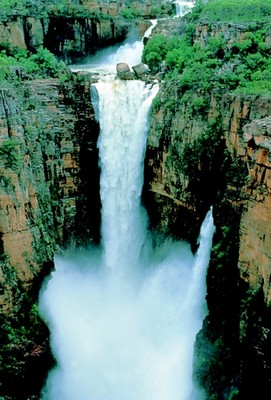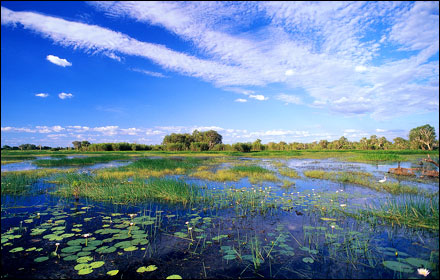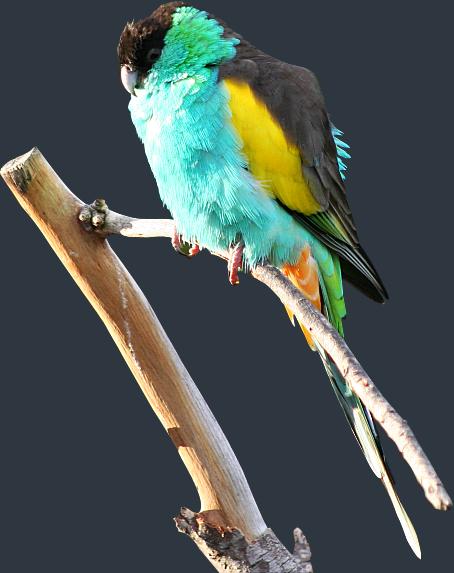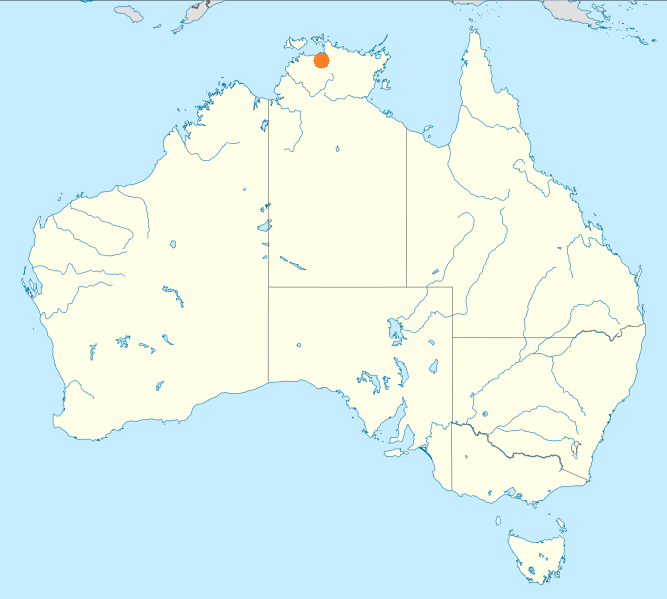Translate This Page
Kakadu National Park is a natural beauty found in the top part of Australia. Ecological effects of sea-level change are evident in the floodplains, of Kakadu, for the northern Australia. This region is extremely important to the Indigenous people, and many communities still live there. The artworks of the people show an outstanding record of human interaction with the environment for over tens of thousands of years.
Take scenic cruise, take a flight all over Kakadu, enjoy exploring the Anbangbang galleries of Nourlangie Rock, a famous Aboriginal art sites, displaying works dating back 40 000 years ago, picnic shady gums, swim in crystal clear natural pools, find unreal waterfalls, participate in sweeping view hikes, learn about the culture of the Aboriginals and much more to do at Kakadu National Park.
Kakadu National Park is 200 kilometres high and 1000 kilometres wide and covers over 19 800 km squared.
The Ranger Uranium Mine is one of the busiest mines in the world and is contained within Kakadu.
Park entry is $25 for a 14 consecutive day pass for persons over 16. It is free to children under 16 or a Northern Territory resident. Possible camping and itineraries options see below for more details.
You can buy at the Bowali Visitor centre or here on-line:
http://passes.parksaustralia.gov.au/ticketing/
For info on camping at Kakadu
http://environment.gov.au/parks/kakadu/visitor-activities/camping.html
Itineraries and ideas
http://en.travelnt.com/experience/nature/seasons-of-kakadu.aspx
|
 Jim Jim Falls, one of many waterfalls in Kakadu | For additional information on any of the selected areas, find it here: http://kakadu.com.au/ticket.html Pass entry to Kakadu http://whc.unesco.org/en/list/147 Unesco website http://www.outback-australia-travel-secrets.com/kakadu-in-the-middle-of-april.html http://en.travelnt.com/experience/nature/seasons-of-kakadu.aspx http://www.environment.gov.au/heritage/places/world/index.html |
Check out the below PDF file for a guide to Kakadu.
|
Kakadu Seasons
Kakadu is calculated in 6 seasons
Wet seasons include Gudjewg and Banggerreng.
Dry seasons include Yegge, Wurrgeng and Gurrung.
Gunumeleng is apart of both wet and dry seasons, mostly wet.
Find more about the seasons and their climates and impacts here:
http://en.travelnt.com/experience/nature/seasons-of-kakadu.aspx

Stay Safe by being prepared and vigilant. Follow these tips to do so: Crocodiles
Disease-carrying insects
|
Police - Jabiru Police (08) 8979 2122 Medical - Jabiru Health Clinic (08) 8979 2018 Poisons Information Centre 13 1126 NRMA - Road side service 13 1111 Park Headquarters (08) 8939 1100 (during business hours) Ranger Stations Numbers South Alligator ranger station (near the Kakadu Resort) (08) 8979 0194 East Alligator ranger station ( near the Border Store) (08) 8979 2291 Jim Jim ranger station (near the Yellow Water turn-off) (08) 8979 2038 Mary river ranger station (6km north of the Wirnwirnmila River Roadhouse) (08) 8975 4578 Emergency call devicesEmergency call devices are to be used in emergencies only. Follow the instructions located on the devices. Emergency call devices can be found at:
For additional safety measures, visit: http://www.environment.gov.au/parks/kakadu/visitor-information/safety.html Respect the land.
|
Transcript: Jacob Nayinggul In Kunwinjku, I can tell you that in this country, the trees, the water and streams, and the plants give us out food. The rainbow serpent, which we call Ngalmudj, gave these things to us and so we go to our country to look after it and there we can stay in our country and know that all is well. But we all help each other with our land. Those neighbours to the south, the west, the east and north - we all help each other to look after our land just as our ancestors did. That is all I have to say. You know, we all know, that it is a good thing to care for the land we all have, thankyou.
|
To be apart of the UNESCO World Heritage list, at least one of the following criteria should be met:
Cultural Criteria
- "represents a masterpiece of human creative genius"
- "exhibits an important interchange of human values, over a span of time, or within a cultural area of the world, on developments in architecture or technology, monumental arts, town-planning, or landscape design"
- "bears a unique or exceptional testimony to a cultural tradition or to a civilization which is living or which has disappeared"
- "is an outstanding example of a type of building, architectural, or technological ensemble or landscape which illustrates a significant stage in human history"
- "is an outstanding example of a traditional human settlement, land-use, or sea-use which is representative of a culture, or human interaction with the environment especially when it has become vulnerable under the impact of irreversible change"
- "is directly or tangibly associated with events or living traditions, with ideas, or with beliefs, with artistic and literary works of outstanding universal significance"
Natural Criteria
7. "contains superlative natural phenomena or areas of exceptional natural beauty and aesthetic importance"
8. "is an outstanding example representing major stages of Earth's history, including the record of life, significant on-going geological processes in the development of landforms, or significant geomorphic or physiographic features"
In 1981, Kakadu National Park was inscribed as part of the World Heritage list because it met these following criteria:
6. To be directly or tangibly associated with events or living traditions, with ideas, or with beliefs, with artistic and literary works of outstanding universal significance. (The Committee considers that this criterion should preferably be used in conjunction with other criteria); The Aboriginal people who interacted with the land for more than 40 000 years drew artworks in the caves of Kakadu about the Dreamtime and their way of life. 7. To contain superlative natural phenomena or areas of exceptional natural beauty and aesthetic importance; 9. To be outstanding examples representing significant on-going ecological and biological processes in the evolution and development of terrestrial, fresh water, coastal and marine ecosystems and communities of plants and animals; 10. To contain the most important and significant natural habitats for in-situ conservation of biological diversity, including those containing threatened species of outstanding universal value from the point of view of science or conservation. Many animals in Kakadu are native and are of biological diversity. The Pig-nosed Turtle, Green Turtle, Gouldian Finch and the Native Turmeric are all fascinating creature found in Kakadu. |

|  |
Directions to Kakadu National Park Road ~3822kms, some roads have tolls.
| Fly ~See below for costs
 |
Location Kakadu National Park is located in the top of the Northern Territory. Geographical Coordinates12'49"60°S 132'49"60°E
 |
